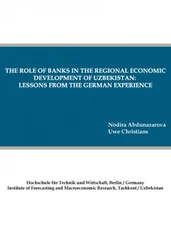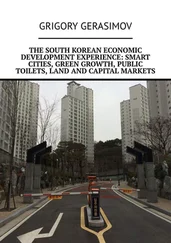First of all, increasing in labour productivity needs time, goes unevenly at different enterprises that is why at less enduring shifts additional labour resources may initially be required to keep and increase output.
The practice shows that already occupied employees who continue working at the same or less volume are one of the sources of this resource. Their motive is increasing in wages owing to overtime hours because at new shift duration a part of a previous working day turns into work over normal duration.
Rapid growth of labour costs, caused by such work, stimulates entrepreneurs to engage new employees from the unemployed. Connection between working day reduction and unemployment decreasing is thoroughly researched in economic literature. It is important to note that it is one of appearances of the tendency to increasing in employment in production.
Presence of unemployment allows reducing a working day even at absence of labour saving in the production sphere. In the economically developed countries at the modern level of employment the number of the unemployed is comparable to needs for additional labour resources in production at reduction of normal duration of a working day until 6 hours. Large-scale shifting from the unemployed to the employed is difficult because of the loss of qualification or insufficient training of the unemployed, their demoralization, etc. Accordingly, a real opportunity of working day reduction, owing to decreasing in unemployment, depends on the level of development of the system of advance training and professional retraining. To our mind, this is exactly why transition to a 6-hour working day is made, first of all, in Sweden where this system is highly developed.
It may seem that conservation and increasing in the number of people occupied in production on the basis of working day reduction with its whole positive impact on economic development is not objectively necessary: retirement of elderly employees from production will be made up by young employees in scales enough for progress of social production at increasing in labour productivity. The practice casts doubt on a possibility of it.
For example, in Great Britain within a research of the class structure of the society, including a poll of a few millions of people, the fact of age-related differentiation of different classes was stated. According to this poll, the average age of representatives of the “traditional working class” was the highest, 66 years old [42]. In other words, reduction of employment in the production sphere of Great Britain was not accompanied by an adequate inflow of young employees. With the presence of it the core of industrial personnel would always be 30-40 years old on average with prospects of 20-30 years of working activities what is necessary for long-term progress of production. When workers’ average age is more than 50-60 years old, these prospects are absent.
This situation is not accidental. 50-year-old duration of shifts at less favorable conditions of labour than, for example, in the “office economy”, the significant element of monotony and routine of labour operations, absence of career prospects minimize attractiveness of labour in production for young people. At conservation of this state curtailment of the production sphere of Great Britain is inevitable in the foreseeable future. Dependence of the country’s economy on the state of its financial sector becomes hypertrophied.
The similar situation somehow admissible for a country being the world-wide bank centre threatens other countries with disorganization of their economies. It is necessary to make such conditions for attracting modern young people to production which would correspond to their values.
Getting a higher education covering already 50-60% of the younger generation is one of the main values for young people of the developed countries. Not taking into consideration this fact one cannot get a mass inflow of young people to production. The system of dual education assists in solving this problem.
In the FRG 60% of graduates continue studying under the dual system supposing working at an enterprise during 3-4 days a week and studying in an educational institution for 8-12 hours. Students are paid a scholarship not only for working time but for study hours too. Though this period is considered to be just training for labour, but, actually, we see a specific form of combination of labour activities and education at working time reduction by 30%-40%, as compared to its normal duration in the German economy.
Supposing that 1.5 million young people are occupied with this labour, we can approximately fix its annual volume: it is about 1.1 billion hours a year. Undoubtedly, a part of these activities is related to working as administrative personnel and so on. Having taken its part as 50%, we can estimate additional resources of production labour as 600 million hours what makes 3.8% of the general working time fund in production of the FRG.
Reduction of normal working day duration until 6 hours would make work in production after studying in educational institutions under the dual system more attractive for young people. On the other hand, utilization of working day reduction for advance training would meet the need of the new generation of employees for studying during the whole life. Thus, the inflow of young people to production would be ensured what is necessary for long-time progress. That is why the German experience of dual education deserves attention in the context of working day reduction until 6 hours.
Of course, completion of transition to daily utilization of 6-hour shifts would put in action the tendency to decreasing in employment in production. To neutralize it new shift reduction (until 5 hours) accompanied by additional increasing in employment in production would be needed and so on.
There can be a lot of such cycles advancing duration of shifts to the objectively possible value and the number of people occupied in production to the number of able-bodied people. Each of these cycles will become a stage in modern economic development.
As duration of working time in production makes the upper limit of typical working time in the nonproduction sphere, so it is right to forecast reduction of working time of employees of this sphere. With development of dual education this reduction will let these employees participate in production (for example, substituting industrial employees having advance training). This process will also assist in overcoming old division of labour.
With presence of the motive to decrease employment entrepreneurs are also interested in development of industrial employees owing to working day reduction. It is indicative that there have always been entrepreneurs (for example, Owen in England, Ford in the USA) who have been decreasing a working day without decreasing workers’ wages on their own initiative, being a success in competition on this basis.
It is quite another matter that in common economic practice this initiative is the lot of very few private owners of means of production. To ensure realization of entrepreneurs’ interests immediately connected to development of employees power of the state is needed.
The state, as a spokesman of interests of the entrepreneurs’ class, is not free from contradictions of these interests. That is why for legislative reduction of a working day social economic activity of employees themselves united in trade unions, the most interested in realization of this measure is needed. Only with an active position of trade unions prolongation of a working day beyond new shifts, realized in a form of overtime work, can be prevented.
Working day reduction allows realizing prospects of reduction of the number of hours worked for the rest more endurable periods of working activities.
Читать дальше












